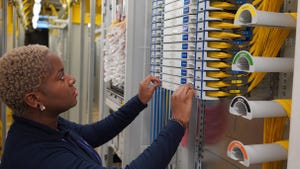Operators Adopt Bolder Strategies for Automation
The most recent Thought Leadership Council (TLC) survey finds that although most communications service providers (CSPs) prefer to have a solid plan in place before moving on a new market trend, it's not looking to be the same for automation, as most CSPs surveyed say they are moving forward without solid plans.

Every year, "big idea" firms release Top Ten lists of the risks facing the telecommunications industry. And every year, the telecom industry's inability to adapt or adopt new routes to innovation hovers somewhere near the top of those lists.
It's not hard to understand why. Service providers have long been tied to the framework mindset, which dictates that a process can only be agreed upon after standards bodies, vendors, operators and anyone else involved carefully and, as a result, slowly contemplates every possibility.
But at least 11 service providers in Heavy Reading's Thought Leadership Council (TLC) are bucking that trend when it comes to automation, as we found in the latest TLC report, Automation Focus Group: CSPs Start Automating Sans Overall Master Plan.
For the report, Council members who are experts in automation were asked a series of ten questions about planning, likely internal impacts, drivers and partners related to automation.
Overall, service providers in the Council believe their companies are doing a good job thus far with automation, even as the majority acknowledge that it's being deployed outside of the traditional framework mindset.
Just more than 45% of TLC participants say their companies are implementing an automation strategy by automating discrete processes first and developing a master plan later. As one TLC participant said: "Billing is in progress; incident and problem management are in place; and SD-WAN fulfilment is planned. There is, however, not a comprehensive, coordinated strategy for an overall automation strategy."
Network management tops the list of functions to be automated, followed closely by incident and problem management. Billing and fulfillment also are high on the list of processes to automate, especially when considering that some service providers want to automate only parts of their billing and fulfillment functions.
Another key takeaway from the findings published in the report is that service providers expect their automation efforts to result in workforce reductions: About 40% of Council members expect a 15-20% reduction in staff as a result of automation. These service providers also say they expect automation won't take longer than two years to implement, so the bulk of the changes expected from automation at the service provider level should start taking effect by 2020.
TLC is a Heavy Reading research initiative that consists of panels of CSP experts focused on key areas of telecom development, including B/OSS Transformation, SD-WAN, Internet of Things (IoT), 5G, Emerging Technologies & Services (Project 2025) and Automation. Members participate in Q&A forums several times a year, and all information disclosed by Council members remains anonymous.
— Denise Culver, Director of Online Research, Heavy Reading
About the Author(s)
You May Also Like












